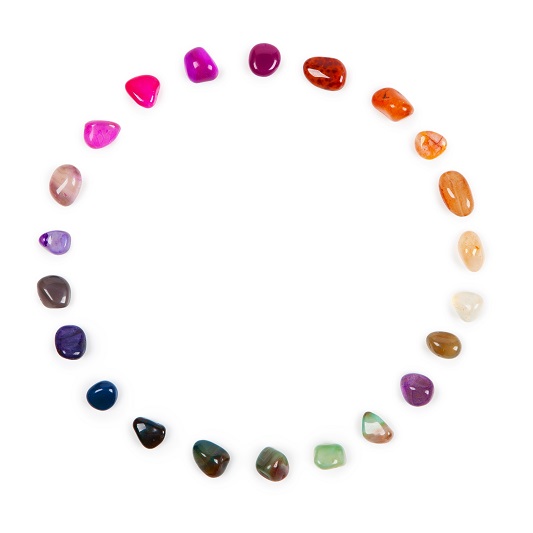Spodumene, gemstone of the week

What to know about Azurite gemstone?
24th May 2018
Gaspeite, Gemstone of the Week
1st June 2018Found in a range of colours, Spodumene is a type of pyroxene mineral. The gemstone is named after the Greek word ‘spodumenos’, which means ‘ash coloured’. While gem-quality Spodumene is found in a variety of colours, industrial-grade specimens are often ash-grey. The mineral was first discovered in 1800 in Sweden, though transparent gem-quality stones first came about in the 20th century. As a Lithium Aluminium Silicate, the stone is still an important source for industrial-use Lithium.
Like many other stones, Spodumene is a group of similar gemstones though many people use the name to refer to the specific gemstone variety. Those in the gem trade only class trans-parent yellow specimens and Spodumene. Other colours of the gem are given colour-specific names including ‘Hiddenite’ and ‘Kunzite’. Aside from yellow Spodumene, Kunzite is one of the most popular Spodumene varieties on the market. Typically, the stone is light-pink in colour, though certain specimens may appear dark-pink to violet. First discovered in the United States, the lustrous stone was named after its founder, George Frederick Kunz. Hid-denite is also popular for use in gemstone jewellery. Boasting a rich green colour, the stone was first found in the United States by William Earl Hidden. In this article, we explore Spod-umene in more detail.
How to Identify Spodumene
To the untrained eye, Spodumene can be difficult to distinguish. However, those with the right equipment can identify the stone with ease. Like many other varieties of Lithium Alu-minium Silicate, Spodumene has a hardness of 7 on the Mohs scale. When cut and polished, gem-quality stones exhibit great transparency and a strong lustre. Interestingly, the mineral shares many of the same properties as Diamond and Topaz; for instance, the stones have a similar crystal habit, fracture, and both have a perfect cleavage. Sometimes, Spodumene can be confused with other gemstones such as Beryl, Topaz, and Quartz; however, it can be dis-tinguished from similar stones by it’s higher refractive index and pleochroism.
Different Colours and Types of Spodumene
In the gem trade, Spodumene stones are yellow in colour. However, the gemstone can be found in a range of different colours including grey, pink, green, lilac, light-blue, white, and colourless. While every colour of the mineral can be classed as Spodumene, every colour other than yellow is traded under a colour-specific name. The colour of Spodumene depends on the impurities in the stones composition. Yellow Spodumene is coloured by Iron impurities, Green Spodumene (Hiddenite) is coloured by Chromium, and Pink Spodumene (Kunzite) is coloured by Manganese. As the mineral is pleochroic, the intensity of colour will vary depending on the viewing angle. Typically, the strongest colour is seen in the top and bottom of each stone. Unfortunately, all specimens of Spodumene are prone to fading. When the stone is used in jewellery, it should be kept out of direct sunlight whenever possible.
Spodumene is loved for its excellent transparency. Most gem-quality stones are completely clear – even larger specimens. Occasionally, the stone can form with the cat’s eye effect known as chatoyancy. However, this rarely affects the value of the mineral. Due to the pleo-chroic nature of Spodumene, it is rarely cut en cabochon. Typically, the gemstone is facetted for use in jewellery. The most popular shapes include rounds, pears, ovals, and cushions. While the intense colour of Spodumene is often natural, brown specimens are sometimes heated to improve their appearance.
Where is Spodumene Found?
Today, Spodumene can be found all over the world. Some of the largest deposits are found in Afghanistan, Brazil, Madagascar, Pakistan and the United States. Originally, Hiddenite was only available in Hiddenite, America. However, the stone can now be found in Afghanistan, Brazil, Madagascar, and Myanmar. While the composition of non-American Hiddenite is iden-tical to that of stones from the US, many people believe that green Spodumene sourced from outside the US should be traded as ‘Green Spodumene’, instead of Hiddenite. The largest de-posits of Kunzite are found in Brazil. Smaller deposits can be found in various other locations including Madagascar, Afghanistan, Myanmar, Pakistan, and the US.
Like most gemstones, Spodumene boasts a variety of healing benefits. In the crystal healing trade, Yellow Spodumene is known as ‘Triphane’. While all varieties of Spodumene can be used for healing purposes, Triphane boasts is own range of properties. Believed to be a cleansing stone, Spodumene can be used to refresh energies and cleanse the chakras. The mineral is often used to motivate its beholder to complete difficult tasks. With this in mind, the stone is ideal for those who often leave projects unfinished.
Spodumene can also protect its wearer from negative energies. For many years, the stone has been used for protection in day-to-day life. Many people choose to carry a piece of Spodu-mene in the car to keep them safe whilst travelling. Physically, Spodumene can help with hearing and vision problems and other sensory conditions. The stone can also benefit those suffering from epilepsy and nervous system disorders. When worn around the neck, it is be-lieved to calm the nervous system and prevent seizures. Relieving pain associated with joint problems, the mineral is also popular amongst those suffering from arthritis.
In Summary
Gem-quality Spodumene is loved all over the world. Today, the mineral is found in various locations worldwide, with notable sources including Afghanistan, Brazil, Madagascar, Pakistan and the United States. Loved for its excellent transparency and vitreous lustre, high-quality Spodumene is often used in designer jewellery. Whether you’re hoping to use the stone for its benefits within crystal healing or you’re looking for a beautiful new addition to your jewellery collection, purchase a piece of Spodumene to reap the benefits.




